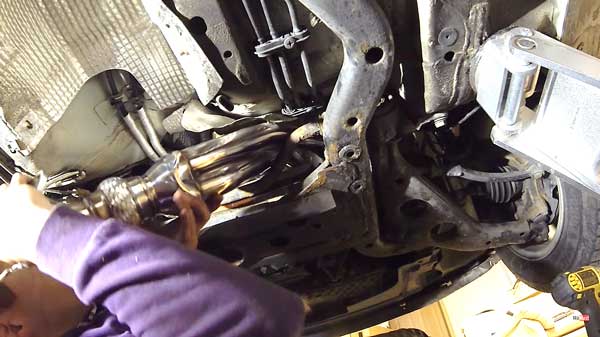Transfer Case Fluid vs Transmission Fluid: Understanding the Difference
What are the main differences between transfer case fluid and transmission fluid, and why is it important to use the correct fluid for each product? When it comes to automotive fluids, there are different types that are needed to keep our cars running smoothly.
However, two fluids that tend to cause confusion are transfer case fluid and transmission fluid. Although they may look the same, these fluids have distinct functions and should never be used interchangeably.
In this article, we will delve into the anomalies of the transfer case fluid and the transmission fluid, to clarify their individual functions. By understanding the unique purpose of consumption, we can understand why it is important to use the right water for each ingredient.
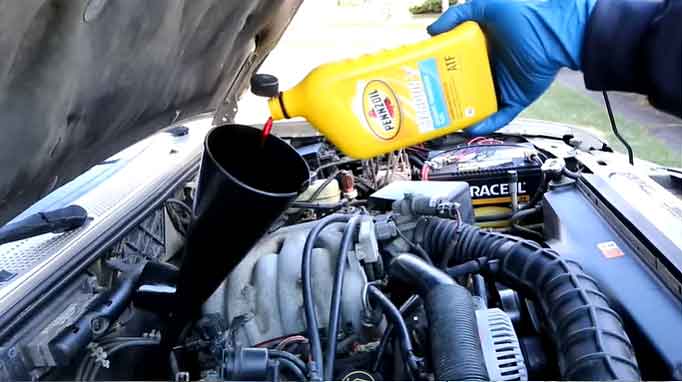
Transfer case fluid and transmission fluid have specific characteristics that meet the needs of their respective parts, ensuring better performance and longer life Ignoring these differences and using incorrect fluids can damage the drive of the vehicle, and can lead to costly maintenance and protection damage
So, let’s explore the differences between transfer case fluid and transmission fluid highlighting the importance of choosing the right fluid for maintaining a high-performance vehicle.
What is a Transfer Case?
Before exploring the ins and outs of the transfer case fluid, let’s start by having a clear understanding of what a transfer case is. The transfer case plays an important role in vehicles equipped with four-wheel drive (4WD) or all-wheel drive (AWD) systems.
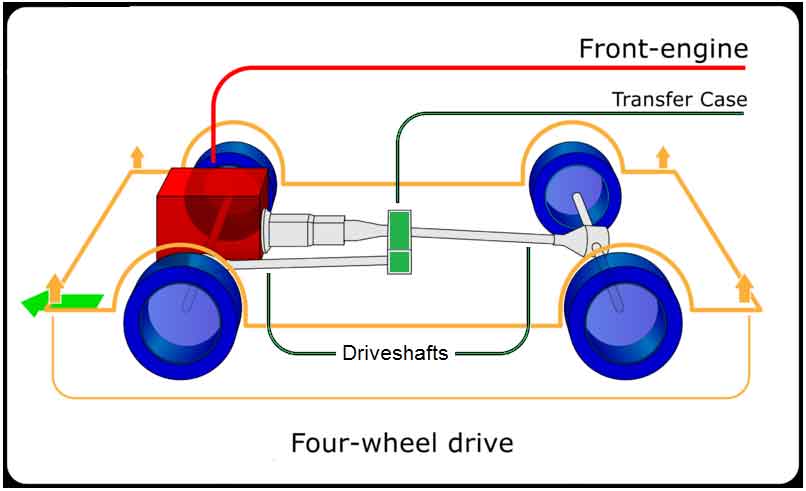
Its main function is efficiently distributing power to the front and rear wheels. This capability allows you to switch between different driving modes such as two-wheel, four-wheel, and automatic mode, depending on existing driving conditions.
Simply put, the transfer case acts as a power distributor, ensuring that each wheel gets the right amount of power to provide optimal traction and stability on a variety of surfaces Routine maintenance, including inspections and transfer case fluid changes, is necessary to ensure this critical performance and efficiency component in 4WD and AWD vehicles.
Transfer Case Fluid: The Power Distributor
Transfer case fluid, as its name suggests, is a special lubricant that plays an important role in ensuring the proper functioning of the transfer case Its main function is to provide lubrication to various internal components such as gears, bearings, and other important parts. Doing so reduces friction and prevents excessive heat buildup, which can lead to premature wear and tear.
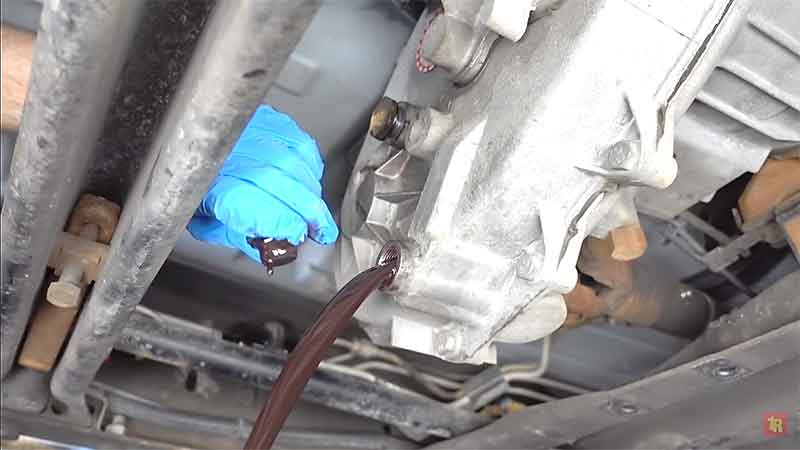
Photo: Swap out 24 years old (78K Miles) Transfer Case fluid.
In addition to lubrication, the water transported in the container also acts as a heat sink, contributing to the temperature of the pipeline. This is important because if the temperature rises too high, it can adversely affect the performance and life of the transfer case. The water, therefore, acts as a refrigerant, allowing the conveyor to operate at an optimum temperature.
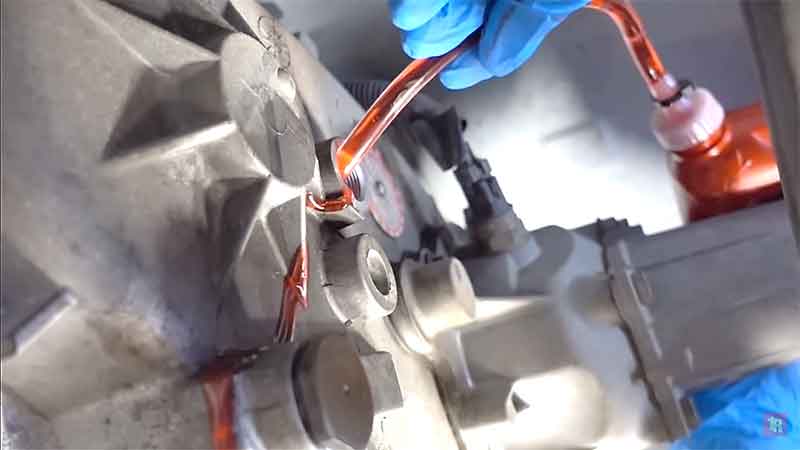
Photo: Swap in new Transfer Case fluid.
Also, the water acts as a protective barrier, shielding and shielding the contents of the transfer case from damage. It is a kind of film that protects internal parts from harmful dirt and moisture, which can wear them down over time.
Transfer case fluid performs several important functions:
- Lubrication,
- Heat Dissipation, and
- Protection,
All of which are required to maintain efficient and reliable transfer case operation
Transmission Fluid: The Gear Shifter
In other words, pipelines serve a specific purpose. The transmission is responsible for transmitting power from the engine to the wheels, allowing the vehicle to change gears and generate appropriate torque in this case, the transmission fluid plays an important role in ensuring that the gear shifting functions properly to ensure the overall operation of the vehicle transmission messages.
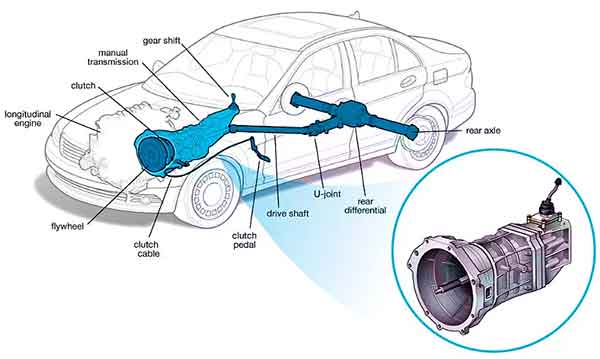
Pipelines have many important applications for message systems:
- It lubricates the gears, clutches, and bearings in the transmission. These lubricants enhance the efficiency of these materials by reducing friction and reducing heat loss.
- The tubing acts as a hydraulic fluid, helping to compress and contract the gear during shifting. This hydraulic action ensures seamless transitions between gears, resulting in smooth acceleration and fuel economy.
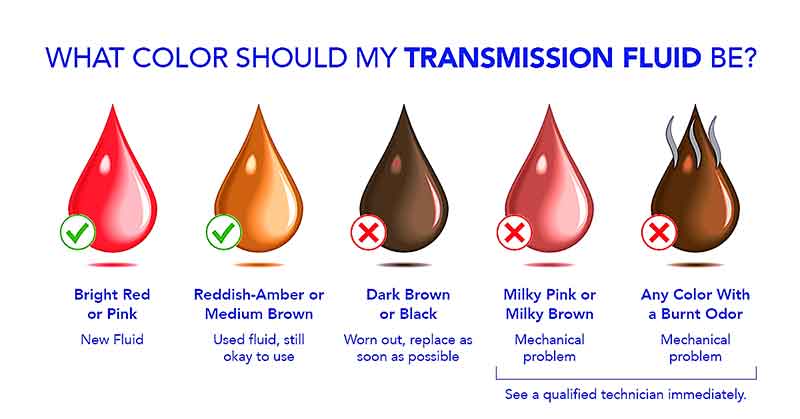
In summary, the transmission fluid is essential for effective transmission. Its lubricating characteristics and hydraulic properties contribute to smooth gear changes, efficiency and overall vehicle performance.
Why You Shouldn’t Mix Them Up
Considering the specific roles of transfer case fluid and transmission fluid it is very important to ensure that the correct fluid is used for each specific component Mixing can have serious negative effects on the overall performance and life of your vehicle on.
For example, if the transmission fluid is used in the transfer case, insufficient lubrication and overheating can occur. Since the transfer case operates under different conditions compared to transmission, it requires fluid with exact viscosity and additives to suit its unique needs.
on the other hand, if transfer case fluid is faulty in transmission it does not wear the gears inside properly, increasing friction levels, and the transmission system itself occurs There may also be potential spoilers. It is very important to use the correct fluid for each specific product to ensure the optimal performance and longevity of your vehicle, thus avoiding any negative effects caused by incompatible fluids or improper lubricants.
Comparison
Here’s a comparison of the car’s Transfer Case Fluid and Transmission Fluid in tabular form:
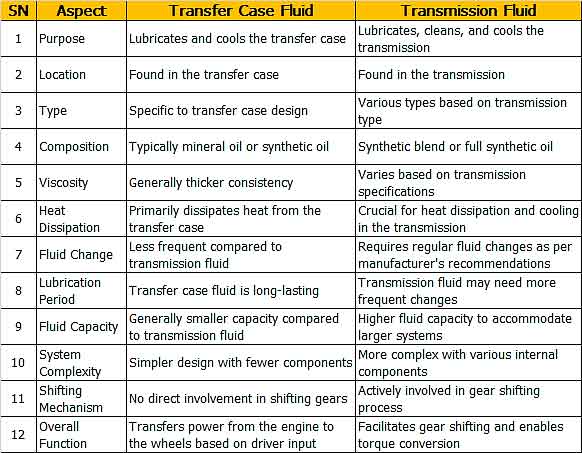
Please note that the items listed above are general in nature, and the actual quality may vary depending on the specific make, model, and model year of the vehicle. It is always advisable to consult the vehicle manual for accurate information on fluid type and maintenance requirements.
Consult Your Vehicle’s Manual
Using the right fluids for your transfer case and transmission is essential to keeping your vehicle running smoothly. Always check your vehicle manual for accurate information. The manufacturer provides clear instructions on the types, amounts, and frequency of water maintenance.

Following these guidelines is important because it keeps your car’s drivetrain components working properly and remaining reliable. Neglecting proper fluid management can lead to potential problems and costly repairs.
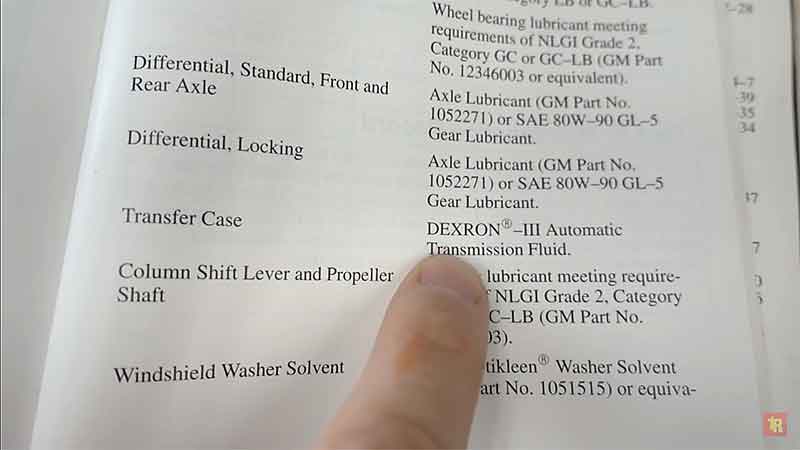
Taking care of your car by using the recommended fluids will ultimately prolong its life and improve its performance. So, remember to check your manual and stick to the manufacturer’s recommendations for a trouble-free ride.
The Importance of Distinct Fluids for Transfer Case and Transmission
Transfer case fluid and transmission fluid are two different types of fluids that have specific applications in the vehicle. Each plays an important role in the smooth running of the vehicle’s systems.
The transmission case fluid is responsible for the proper functioning of the power distribution system, ensuring that power is evenly distributed to all wheels. On the other hand, the transmission fluid is essential for proper gear changing and for overall transmission performance well.
It is important to understand that this fluid is not interchangeable. Mixing it up can have a negative effect on your car, leading to costly repairs and a terrible driving experience. To avoid such issues, it is highly recommended to consult your vehicle’s manual which gives specific instructions on the fluid to use for each item.
By following these tips and using the right fluids for the right parts, you can ensure that your driveway stays in great condition for a long time ultimately resulting in a reliable and durable drive reliable results.



